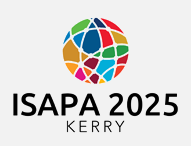Start Date
18-6-2025 12:30 PM
End Date
18-6-2025 2:00 PM
Abstract
Introduction The importance of sustainable physical literacy (S-PL) in childhood is emphasized to support lifelong physical activity and health (WHO, 2018). Despite increasing recognition of physical literacy’s significance, its application among children with developmental disabilities (DD) remains underexplored (Kaioglou & Venetsanou, 2020). This systematic review aims to conceptualize S-PL and propose a comprehensive S-PL framework for this population.
Methodology A systematic search of English and Korean academic literature published between 1995 and 2024 was conducted across PubMed, SPORTDiscus, ERIC, DBpia, KISS, and RISS. The search followed the PICO-TSS framework, using keywords ‘physical literacy’ AND ‘physical’ AND ‘literacy,’ considering a lack of literature in specific disability population.
Results Studies were screened according to PRISMA guidelines, yielding 26 relevant articles (English: n=20, Korean: n=6). Key findings were synthesized into a structured table categorizing each study based on the definition of S-PL, theoretical foundations, alignment with Whitehead’s domains, and relevance to SHAPE America’s 2024 physical literacy components. The analysis revealed that existing definitions of S-PL lack consensus, highlighting the need for a standardized framework that integrates cognitive, affective, and physical domains specific to children with DD.
Conclusions Findings indicate a need for a holistic S-PL framework that incorporates developmental, environmental, and pedagogical considerations. Additionally, future research should focus on validating assessment tools and conducting experimental studies to evaluate the effectiveness of S-PL interventions for children with DD. This review may provide a foundation for guiding future research and practical applications to better educate physical literacy in this population.
Recommended Citation
Jin, Jooyeon; Lee, Hoo Kyung; Han, Jiwoo; and Lee, Soomin, "Conceptualizing Sustainable Physical Literacy for Children with Developmental Disabilities: A Systematic Review" (2025). International Symposium of Adapted Physical Activity and International Symposium on Physical Activity and Visual Impairment and Deafblindness. 34.
https://sword.mtu.ie/isapa/2025/day3/34
Conceptualizing Sustainable Physical Literacy for Children with Developmental Disabilities: A Systematic Review
Introduction The importance of sustainable physical literacy (S-PL) in childhood is emphasized to support lifelong physical activity and health (WHO, 2018). Despite increasing recognition of physical literacy’s significance, its application among children with developmental disabilities (DD) remains underexplored (Kaioglou & Venetsanou, 2020). This systematic review aims to conceptualize S-PL and propose a comprehensive S-PL framework for this population.
Methodology A systematic search of English and Korean academic literature published between 1995 and 2024 was conducted across PubMed, SPORTDiscus, ERIC, DBpia, KISS, and RISS. The search followed the PICO-TSS framework, using keywords ‘physical literacy’ AND ‘physical’ AND ‘literacy,’ considering a lack of literature in specific disability population.
Results Studies were screened according to PRISMA guidelines, yielding 26 relevant articles (English: n=20, Korean: n=6). Key findings were synthesized into a structured table categorizing each study based on the definition of S-PL, theoretical foundations, alignment with Whitehead’s domains, and relevance to SHAPE America’s 2024 physical literacy components. The analysis revealed that existing definitions of S-PL lack consensus, highlighting the need for a standardized framework that integrates cognitive, affective, and physical domains specific to children with DD.
Conclusions Findings indicate a need for a holistic S-PL framework that incorporates developmental, environmental, and pedagogical considerations. Additionally, future research should focus on validating assessment tools and conducting experimental studies to evaluate the effectiveness of S-PL interventions for children with DD. This review may provide a foundation for guiding future research and practical applications to better educate physical literacy in this population.

